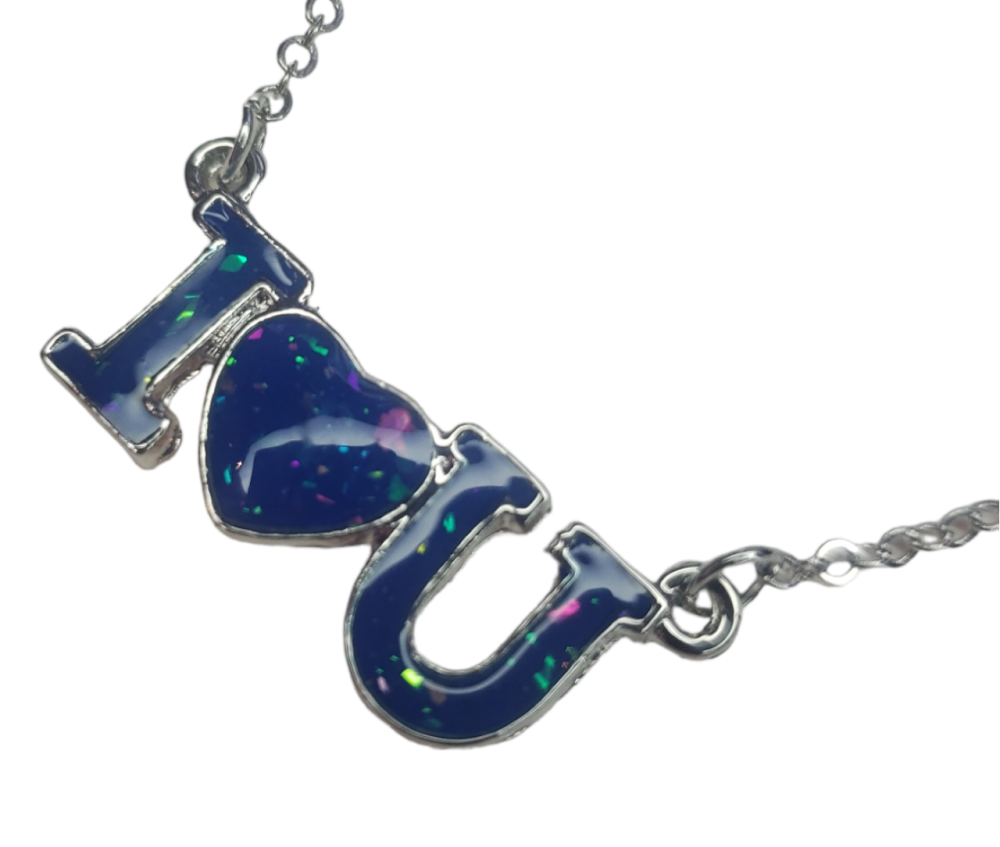We use cookies to make your experience better.
“I love you” in Opal (imitation)
The best-selling necklace of the moment in the UK and France! Very fine Opal inlay
Availability:
In stock
SKU
11980
“I love you” in Opal (imitation) is available to buy in increments of 3
The mineraloid opal is an amorphous variety of quartz, SiO2·nH2O, hydrated silica with a water percentage of up to 20%. Opal can be colorless, white, milky blue, gray, red, yellow, green, brown and black. Often many of these colors can be seen right away, caused by interference and diffraction of light passing through minute, regularly arranged openings within the opal's microstructure known as Bragg's lattice. These openings are filled with secondary silicic acid and form thin lamellae within the opal during hardening. The term opalescence is used to describe this unique and beautiful phenomenon, although iridescence would be a better term. Opal is one of the minerals that form or can replace fossils. The resulting fossils are spared by collectors. "Opal" is derived from the Old Indian word úpala', meaning gemstone. A distinction is made between the glittering precious opals, the yellow-red fire opals and the normal opals. Their physical properties show important differences. The opal is the official gemstone of South Australia. Opal has been worked as a gem since ancient times. Initially it was used for the manufacture of primitive tools, later for decorative objects. Opal has been used before the Assyrians, Babylonians and Romans. Edelopal is one of the most mysterious stones. Traditionally it was considered a stone that brings bad luck, especially for people who did not clean the stone properly. The precious opal that Pliny described comes from the deposits of Dubník in Slovakia, which were already being mined at that time. Magical powers were attributed to this stone. He helped against melancholy, calmed the nerves, healed the heart, protected from worries, restored vision and gave the eyes a new glow. In addition to naturally occurring opal, opal is manufactured in a variety of ways, experimentally and commercially. The resulting material is distinguishable from natural opal by its regularity; under magnification the patches of color are seen arranged in a "lizard skin" or "chicken wire" pattern. Synthetic opals are further distinguished from natural opal by the former's lack of phosphorescence under UV light. Also, synthetic opals are generally lower in density and are often highly porous; some may even stick to the tongue. Two notable producers of synthetic opal are the Kyocera and Inamori companies in Japan. Most so-called synthetic opals, however, are more correctly termed imitations, as they contain substances not found in natural opal (e.g., plastic stabilizers). The Gilson opals often seen in fine jewelery are actually imitations consisting of laminated glass with sprinkled bits of foil.
| Dimensions | One size fits all |
|---|---|
| Country of Manufacture | China |











